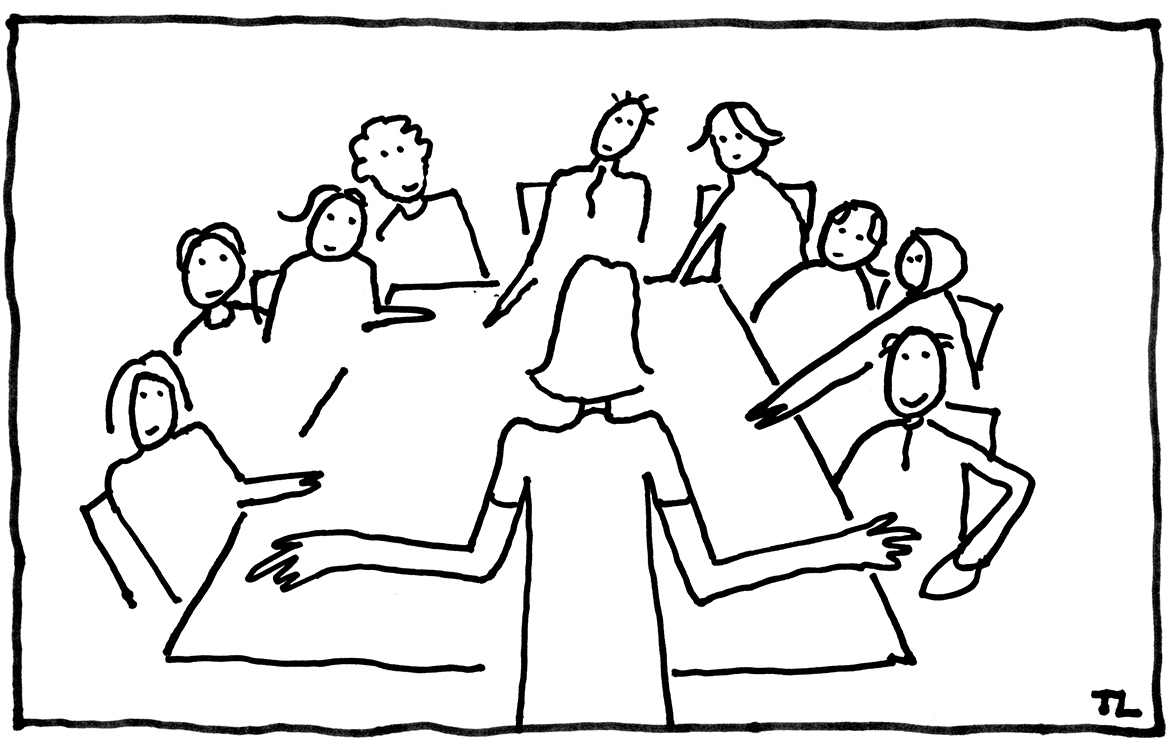Planning for Partnerships: Aligning Rainmakers

To be successful, brand design programs for professional services firms require more internal consensus than do similar programs for other business structures. Large partnerships — lawyers, accounting practices, engineering firms, and even large design consultancies — need partner-wide agreement because of their traditional management-by-committee structures.
Gaining consensus on branding and marketing issues is often a particularly difficult area. Those who have attained senior partner status have reached their positions because of their professional expertise and, often, their innovative business skills. They are smart, engaged professionals whose sales skills are based on their accumulated knowledge and who view branding as a consumer product technique that is not appropriate for professionals. These partners may find the need for consensus on what their brands mean to be at odds with their individual sales efforts.
Driving New Business
Usually, only a few key partners generate new business in these firms. Known as “rainmakers,” they’ve developed reputations in particular specialty areas, have built successes in specific industries or are known for solving particularly tough problems of one kind or another.
Rainmakers sell on the basis of their personal expertise and connections. A large firm might have multiple rainmakers independently operating their own new business efforts. In effect, each partner promotes his own personal brand — not the corporate brand. As a result, a firm with ten rainmakers could have ten brand message programs running simultaneously.
In my experience, the rainmaker method can lead to terrific short-term growth, but, over time, a more systematic approach is needed to provide a steady supply of new business. Professional partnerships are adding seasoned marketers to manage the new business cycle to combat the inevitable ups and downs of a new business campaigns.
Gaining Senior Management Support
However, hiring someone to fix the problem is just the start. Marketers need the resources and the support of the firm’s principals to succeed, and that’s where problems often arise — especially in getting senior partners to agree so that resources are available and can be used effectively. The first thing a marketer must do is get the senior partners to understand why an overarching brand program will work to unify company messaging, where it comes from, and how to use it effectively.
Where Brands Originate and How to See Them
First, know what you stand for and why.
The key to your brand is determining how the services you provide help others (clients). It’s the source of your message. It’s what people remember about you. It’s what makes you important to them. That’s where the emotional bond originates.
Second, focus your message on what differentiates you.
Look for those specifics that help you stand apart from the competition. Then, using those differentiating elements, find opportunities to dramatize your particular way of helping others succeed.
Third, live what you say, stay true to yourself and be real.
Great brands are built on trust and authenticity and are supported by years of delivering what people want. Great brands build on and accentuate the genuine elements from their histories, which support their brands’ stories. They make sure that what they do really lives up to what they say.
Fourth, tell the world.
Use your brand as the overarching guide for everything you say to all stakeholders. Decide how to reach those who need your help, and begin the conversation. Telling your story consistently increases the believability in what you have to say. Make sure that everything you say strives to help others. It’s about them (the clients), not about you.
Market Pressure Provides the Reason to Brand
Once a basic understanding of branding exists, one can engage the partners in identifying why they should formalize their own brands. I’ve found the following reasons to be quite common across professional service partnerships:
- Price pressure. Clients choose lower cost firms. The firm must show why it is the best choice in spite of higher costs.
- Growth has slowed, reducing the firm’s ability to attract and retain the best talent. Great talent is the source of future success.
- A string of acquisitions has created a group of global competitors providing full services and capturing global clients. You must determine how to position yourself in this changing market.
- Intense competition has created more emphasis on specialized skills. A branding process will help the firm determine its place in the competitive mix.
Core Beliefs and Principles
Establishing a group of core principles drawn from successful client engagements and then using those principles to start a firm-wide conversation can begin to align the entire firm. The principles must resonate with the partners, staff and prospective clients. All must be part of the firm’s history.
Here’s an example of the kind of principles that can start the conversation:
- The firm’s interests are always second to clients’ interests.
- Client engagements must result in more profit for the client than the fees charged.
- Partners are just as responsible for the health and well-being of staff as they are for the health of the business.
Expect the principles to change and be added to or subtracted from the conversation. That’s what we want to happen as this will create real engagement, and only from real engagement will partners and everyone else buy in.
The completion of this process and the formalizing of the results will provide the firm’s marketing leadership with the mandate and the tools to begin the brand design program.
This article originally appeared at Agency Post.

